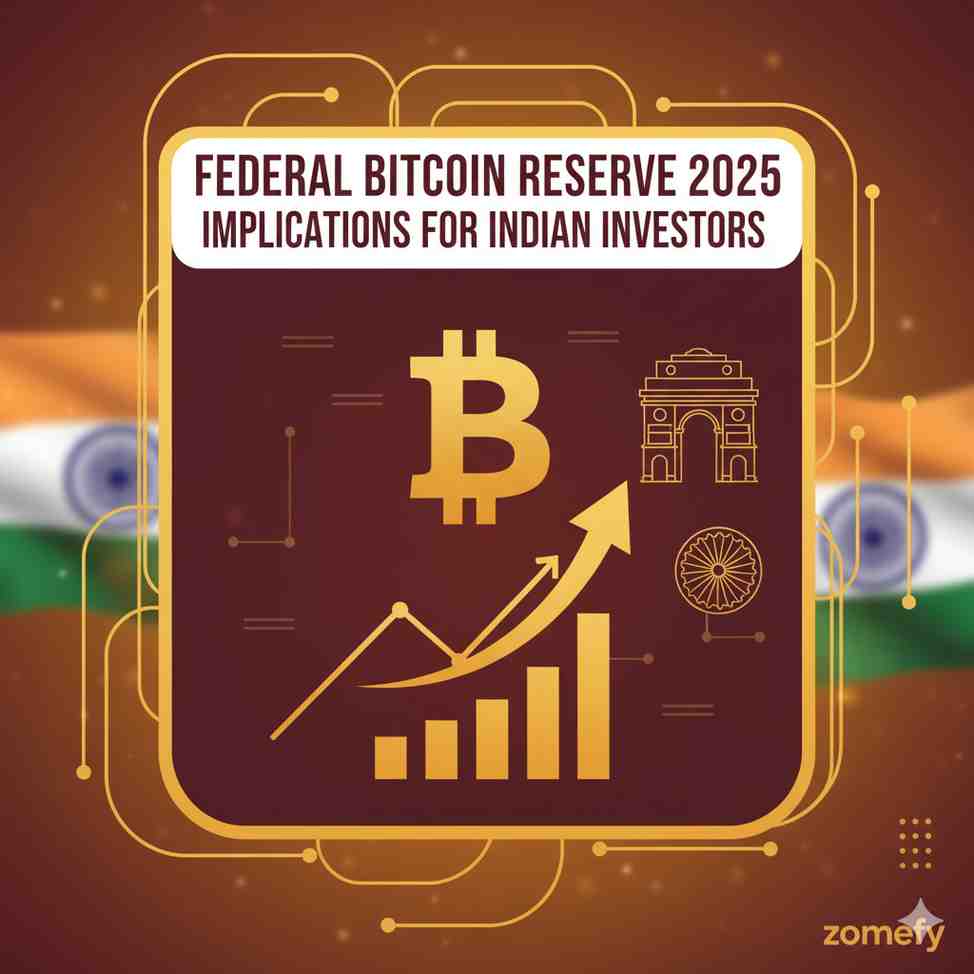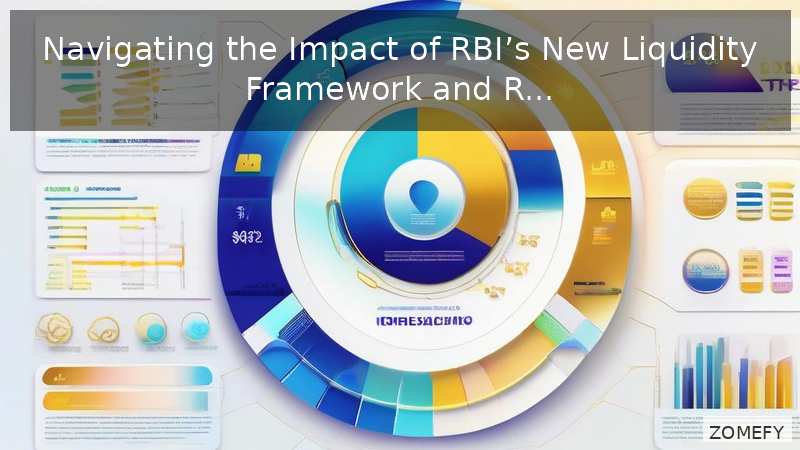The History of US Dollar Dominance & Its Impact on Emerging Markets (1944-2025)
Complete history of US dollar dominance (1944-2025) and its impact on emerging markets. How Fed policy, dollar cycles, and currency crises shape Indian stock market returns.
The History of US Dollar Dominance & Its Impact on Emerging Markets (1944-2025)
What You Can Do Next
- Read the full article for complete insights
- Save for later reference
- Share with others learning about this topic
Image not available
The US dollar is not just America's currency—it's the world's currency. Despite the United States representing only 25% of global GDP, the dollar accounts for 60% of global foreign exchange reserves, 88% of all forex transactions, and 50% of international trade invoicing. This extraordinary dominance shapes the fate of emerging markets, including India.
When the US Federal Reserve raises interest rates, emerging market currencies tumble. When the dollar strengthens, capital flees developing nations. When the Fed prints money, emerging markets boom. Indian stock markets, the rupee's value, and even your mutual fund returns are directly tied to decisions made in Washington DC.
Understanding dollar dynamics is not optional for emerging market investors—it's essential.
The Birth of Dollar Dominance: Bretton Woods (1944)
Feature | Description |
|---|---|
| **Gold Standard Link** | US dollar pegged to gold at $35/ounce |
| **Currency Pegs** | Other currencies pegged to USD (not gold directly) |
| **IMF Created** | International Monetary Fund to provide emergency liquidity |
| **World Bank Created** | For post-war reconstruction and development |
| **Dollar Convertibility** | Central banks could convert dollars to gold at fixed rate |
| **Trade Settlement** | USD became primary currency for international trade |
Why the Dollar (Not British Pound or Others)?
✅ Stable exchange rates (predictability for trade) ✅ Access to World Bank/IMF funding ✅ Integration into global trade system
❌ Loss of monetary policy independence (pegged to USD) ❌ Vulnerability to US inflation (imported inflation) ❌ Trade deficits if unable to compete with US exports
The Nixon Shock & End of Gold Standard (1971)
US President Richard Nixon announced that the dollar would no longer be convertible to gold. This decision, known as the "Nixon Shock," ended the Bretton Woods system and ushered in the era of fiat currency (money backed by nothing but government promise).
Event | Date | Impact |
|---|---|---|
| Nixon Shock | Aug 15, 1971 | Dollar falls 7% vs major currencies |
| Smithsonian Agreement | Dec 1971 | Dollar devalued, new fixed rates attempted |
| System Collapse | Feb 1973 | All major currencies float freely |
| Gold Price Soars | 1971-1974 | Gold rises from $35 to $195/oz |
Indicator | 1971 | 1975 | Change |
|---|---|---|---|
| Rupee/USD | ₹7.50 | ₹8.38 | -11.7% (rupee weakened) |
| Inflation (CPI) | 5.6% | 9.3% | +3.7% (imported inflation) |
| Gold Price (₹/10g) | ₹184 | ₹540 | +193% (hedge against currency debasement) |
| Forex Reserves | $1 billion | $1.5 billion | Barely improved |
The end of gold standard unleashed inflation globally. Gold, real assets, and equities became necessary to preserve wealth. Fixed income and cash were silently destroyed by inflation.
The Dollar's Rise: Volcker Era (1980-1985)
Year | US Fed Rate | Impact |
|---|---|---|
| 1979 | 11% | Starting point |
| 1980 | 20% | Peak (crushed inflation) |
| 1981 | 19% | Maintained high rates |
| 1982 | 12% | Recession, unemployment 10%+ |
| 1983-85 | 8-10% | Gradual easing |
✅ US inflation fell from 13% (1980) to 3% (1983) ✅ Dollar strengthened massively (30%+ vs major currencies) ❌ US recession (1981-82, worst since Great Depression) ❌ Unemployment hit 10.8% (1982) ❌ Emerging markets devastated (more below)
The 1980s are remembered as the "Lost Decade" for Latin America and many emerging markets.
Country | Crisis Year | Currency Fall | Impact |
|---|---|---|---|
| **Mexico** | 1982 | 300%+ devaluation | Defaulted on $80 billion debt, IMF bailout |
| **Argentina** | 1982-83 | 400%+ devaluation | Hyperinflation, peso collapse |
| **Brazil** | 1982 | 100%+ devaluation | Debt moratorium, decade of stagnation |
| **Chile** | 1982 | 80% devaluation | Banking crisis, GDP fell 15% |
| **Philippines** | 1983 | 60% devaluation | Political crisis (Marcos era), capital flight |
Indicator | 1980 | 1985 | Change |
|---|---|---|---|
| Rupee/USD | ₹7.86 | ₹12.38 | -57% (rupee weakened) |
| Inflation (CPI) | 11.4% | 5.6% | Improved (commodity crash helped) |
| Forex Reserves | $7.5 billion | $6.9 billion | Declined (capital outflows) |
| Current Account Deficit | -1.5% of GDP | -2.1% of GDP | Widened (oil imports costly) |
✅ Limited external borrowing (closed economy, License Raj) ✅ Low integration with global finance ✅ IMF/World Bank support for balance of payments ✅ Remittances from Gulf (oil boom workers)
❌ Slower growth (3-4% "Hindu rate of growth") ❌ Weak rupee (imported inflation) ❌ Forex crises (1981, 1984 mini-crises) ❌ Dependence on IMF loans (loss of policy sovereignty)
Strong dollar = pain for emerging markets. Capital flows reverse, currencies fall, stocks underperform. **Diversification into dollar-denominated assets (US stocks, dollar bonds) hedges emerging market risk.
Dollar Weakness & Emerging Market Boom (1985-1997)
G5 nations (US, Japan, Germany, France, UK) agreed to coordinate central bank intervention to weaken the dollar.
Region | Stock Market CAGR (1985-97) | Currency vs USD | GDP Growth |
|---|---|---|---|
| **India** | 18% | ₹12 → ₹36 (-66%) | 5-6% |
| **China** | 25%+ | RMB 3.2 → 8.3 (-61%) | 10%+ |
| **Brazil** | 15% (real terms) | Hyperinflation period | 3-4% |
| **Mexico** | 20%+ | Peso stable post-crisis | 4-5% |
| **Thailand** | 30%+ | Baht 25 → 25 (stable) | 8-10% |
| **South Korea** | 12% | Won 870 → 950 (-9%) | 7-9% |
India's 1991 liberalization coincided with weak dollar period:
Indicator | 1991 | 1997 | Change |
|---|---|---|---|
| Sensex | 1,908 | 3,658 | +92% (14%+ CAGR) |
| Rupee/USD | ₹17.95 | ₹35.85 | -50% (but managed float) |
| FII Inflows | $0 (not allowed) | $2-3 billion/year | New asset class |
| Forex Reserves | $1 billion | $25 billion | 25x growth! |
| Market Cap/GDP | 10% | 35% | Financialization |
Sector | Performance | Why? |
|---|---|---|
| **IT Services** | 🚀 **10x gains** | Rupee depreciation + US demand |
| **Pharma Exports** | 🚀 **5x gains** | Weak rupee = competitive pricing |
| **Textiles** | ⬆️ Strong | Export competitiveness |
| **Commodities** | ⬆️ Moderate | Global commodity prices rose |
| **Banking** | 🚀 **4x gains** | Liberalization, FII inflows |
Just as emerging markets celebrated, the Asian Financial Crisis struck in July 1997. The dollar had begun strengthening again, and the consequences were severe.
Dollar Strength & Crisis: Asian Crisis (1997-1998)
What started as a Thai currency crisis spiraled into the worst emerging market contagion since the 1980s.
Date | Event | Market Impact |
|---|---|---|
| Jul 2, 1997 | Thailand floats baht (devalues 20% overnight) | Thai stocks -55% (1997) |
| Jul-Aug 1997 | Malaysia, Indonesia, Philippines currencies collapse | ASEAN markets -50% |
| Oct 1997 | Hong Kong defends peg, interest rates hit 280% (overnight) | Hang Seng -40% |
| Nov 1997 | South Korea won collapses, IMF bailout | Kospi -50% |
| Aug 1998 | Russia defaults on debt | Global panic |
| Sep 1998 | LTCM hedge fund collapse (US) | Fed emergency rate cut |
Country | Currency Fall (1997-98) | Stock Market Fall | IMF Bailout |
|---|---|---|---|
| **Thailand** | -56% | -55% | $17 billion |
| **Indonesia** | -83% | -70% | $43 billion |
| **South Korea** | -50% | -50% | $58 billion |
| **Malaysia** | -38% | -45% | Refused (capital controls instead) |
| **Russia** | -70% | -85% | $23 billion (still defaulted) |
Indicator | Impact | Reason |
|---|---|---|
| **Rupee** | -5% (₹35 → ₹37) | Managed float, RBI intervention |
| **Sensex** | -16.5% (1998) | Contagion, FII outflows, Pokhran tests |
| **Forex Reserves** | -15% | RBI sold dollars to defend rupee |
| **GDP Growth** | 6.2% (1998) | Slowdown but no crisis |
✅ Capital account not fully open (limited hot money flows) ✅ Strong forex reserves ($25 billion buffer) ✅ Low short-term external debt (unlike Thailand, Korea) ✅ Current account manageable (-1.5% of GDP) ✅ Banking sector isolated (not exposed to Asian debt)
❌ FII outflows (-$600 million in 1998) ❌ Sensex fell from 4,200 (1997) to 3,055 (1998) ❌ Rupee pressure (defended via reserves, not free float) ❌ Economic reforms slowed (political instability 1996-98)
Strong dollar triggers emerging market crises. Diversification, forex hedging, and avoiding overleveraged economies are critical. India's conservative approach (capital controls, managed float) proved wise during crises, even if it limited growth potential.
2000s: Dollar Decline & Emerging Market Boom
Post-dot-com bust (2000-2002), the US Federal Reserve slashed rates to 1%, weakening the dollar. This ignited the greatest emerging market bull run in history.
Year | Dollar Index | Change | Impact on Emerging Markets |
|---|---|---|---|
| 2000 | 110 | Baseline | Weak (dollar strong) |
| 2002 | 105 | -5% | Improving |
| 2004 | 85 | -19% | Boom begins |
| 2006 | 84 | -24% | Peak euphoria |
| 2008 | 78 | -29% | Crisis (dollar fell then surged) |
Market | CAGR (2001-07) | Currency vs USD | Key Drivers |
|---|---|---|---|
| **India (Sensex)** | 32.4% | ₹47 → ₹40 (+17%) | IT boom, reforms, FII inflows |
| **China (Shanghai)** | 28% | RMB 8.3 → 7.3 (+14%) | Export powerhouse, Olympics prep |
| **Brazil (Bovespa)** | 35% | Real 2.9 → 1.8 (+61%) | Commodity boom, Lula reforms |
| **Russia (RTS)** | 45%+ | Ruble 30 → 25 (+20%) | Oil boom ($150/barrel in 2008) |
| **South Africa** | 25% | Rand 12 → 7 (+71%) | Mining boom, commodity exports |
Indicator | 2003 | 2008 (Peak) | Change |
|---|---|---|---|
| Sensex | 5,839 | 21,206 (Jan 08) | **+263%** |
| Nifty | 1,700 | 6,300 | +271% |
| Rupee/USD | ₹47.50 | ₹39.40 | **+21% (rupee strengthened)** |
| FII Inflows | $8 billion | $20 billion/year | Peak foreign interest |
| Forex Reserves | $70 billion | $310 billion | 4.4x growth |
| Market Cap/GDP | 35% | 150% | Massive financialization |
| GDP Growth | 8.5% | 9.3% (2007) | Peak growth |
Sector | Performance | Why? |
|---|---|---|
| **Real Estate** | 🚀 **8-10x gains** | Credit boom, urbanization, FII inflows |
| **Infrastructure** | 🚀 **10x gains** | Govt capex, PPP projects |
| **Banking** | 🚀 **5x gains** | Retail credit explosion, low NPAs |
| **Metals/Mining** | 🚀 **8x gains** | Global commodity super-cycle |
| **Auto** | 🚀 **6x gains** | Rising middle class, easy credit |
| **IT Services** | 🚀 **4x gains** | Outsourcing boom, stable rupee |
Lehman Brothers collapsed (Sep 2008), dollar surged as safe haven, emerging markets crashed 50-60%. India's Sensex fell from 21,000 to 8,000 (-62%).
Weak dollar = emerging market boom. Strong dollar = emerging market crash. **The correlation is near-perfect and predictable. Monitor dollar index (DXY) as closely as Sensex/Nifty.
2010s-2020s: Dollar Cycles & India's Evolution
Post-2008, global central banks printed money (QE). Dollar weakened, emerging markets recovered.
Year | Dollar Index | Sensex | Rupee/USD | FII Flows ($ billion) |
|---|---|---|---|---|
| 2009 | 78 | 17,464 | ₹48 | $18 billion |
| 2010 | 78 | 20,509 | ₹45 | $29 billion |
| 2011 | 78 | 15,455 | ₹53 | -$500 million |
| 2012 | 80 | 19,427 | ₹55 | $24 billion |
| 2013 | 80 | 21,170 | ₹62 | -$2 billion |
Post-2014, India decoupled from dollar cycles better than other emerging markets.
Factor | 2000s | 2020s | Improvement |
|---|---|---|---|
| **Forex Reserves** | $150 billion | $600+ billion | 4x buffer |
| **Current Account** | -4% to -5% of GDP (deficit) | -1% to -2% of GDP | Sustainable |
| **External Debt** | 20% of GDP | 18% of GDP | Less vulnerable |
| **Dollar Debt** | High corporate borrowing | Lower, better hedged | Reduced risk |
| **Domestic Savings** | 70% in gold/real estate | 50% in financial assets | Less capital flight risk |
| **Digital Economy** | Nascent | UPI, fintech revolution | Attracts long-term FDI |
Period | Dollar Index Move | Sensex Performance | Rupee Move | Observation |
|---|---|---|---|---|
| 2014-2015 | 95 → 100 (+5%) | +25% | ₹60 → ₹66 (-10%) | India absorbed dollar strength |
| 2016-2017 | 102 → 93 (-9%) | +28% | ₹68 → ₹64 (+6%) | Weak dollar tailwind |
| 2018 | 88 → 97 (+10%) | +6% | ₹64 → ₹70 (-9%) | Dollar strength slowed gains |
| 2019-2020 | 97 → 90 (-7%) | +15% | ₹70 → ₹74 (-6%) | COVID volatility |
| 2021-2022 | 90 → 114 (+27%) | +5% | ₹73 → ₹83 (-14%) | Aggressive Fed hikes |
| 2023-2025 | 114 → 104 (-9%) | +18% | ₹83 → ₹83 (stable) | India benefited from dollar easing |
While dollar still matters, India has become more resilient. Unlike 1997 (Asian Crisis) or 2013 (Taper Tantrum), India can withstand dollar strength better. But monitoring Fed policy remains critical—surprises still trigger volatility.
How Dollar Strength Affects Your Investments
1. Rupee Depreciation
Sector | Impact of Dollar Strength (Rupee Weakness) | Why? |
|---|---|---|
| **IT Services** | ✅ **Positive** (Infosys, TCS, Wipro, HCL Tech) | 60-70% revenue in USD, rupee depreciation boosts profits |
| **Pharma Exports** | ✅ **Positive** (Sun Pharma, Dr. Reddy's, Cipla) | US market exposure, rupee tailwind |
| **Textiles/Apparel** | ✅ **Positive** | Export competitiveness improves |
| **Auto Ancillaries** | ✅ **Positive** | Export-oriented companies benefit |
| **Oil & Gas** | ❌ **Negative** (ONGC, RIL, BPCL, HPCL) | Import crude in USD, costs rise |
| **Aviation** | ❌ **Negative** (IndiGo, SpiceJet, Air India) | Fuel, aircraft leases in USD |
| **Paint/Chemicals** | ❌ **Negative** (Asian Paints, Pidilite) | Raw materials imported in USD |
| **Telecom** | ❌ **Negative** (Airtel, Jio) | Equipment (Ericsson, Nokia) in USD |
| **Banking** | 🟡 **Mixed** | NIMs benefit from rate hikes, but loan growth may slow |
| **FMCG** | ❌ **Negative** | Input cost inflation squeezes margins |
| **Real Estate** | ❌ **Negative** | Higher EMIs (if RBI raises rates), demand hit |
| **Metals** | 🟡 **Mixed** | Export benefit (rupee) vs global demand slowdown |
2. Foreign Institutional Investor (FII) Flows
Scenario | FII Action | Market Impact |
|---|---|---|
| **Dollar strengthens + US rates rise** | Sell emerging markets, buy US bonds (safe + high yield) | Sensex/Nifty fall 5-15% |
| **Dollar weakens + US rates fall** | Buy emerging markets (higher growth potential) | Sensex/Nifty rally 10-25% |
Period | Dollar Move | FII Flows (India) | Sensex Impact |
|---|---|---|---|
| 2013 Taper Tantrum | +6% in 3 months | -$5 billion outflow | -10% |
| 2015 Fed Hike | +10% (year) | -$4 billion | -5% |
| 2018 Fed Hikes | +10% | -$5 billion | +6% (muted) |
| 2022 Fed Hikes | +20% | -$17 billion | +5% (resilient) |
| 2023 Dollar Eases | -10% | +$20 billion | +18% |
3. Gold Prices (Inverse Correlation)
Dollar Strong → Gold Weak (in USD terms)
Scenario | Gold (USD/oz) | Rupee/USD | Gold (₹/10g) | Outcome |
|---|---|---|---|---|
| Dollar weak (2001-08) | $270 → $1,000 | ₹47 → ₹40 | ₹4,400 → ₹18,500 | Strong gains |
| Dollar strong (2013) | $1,600 → $1,200 | ₹54 → ₹68 | ₹28,000 → ₹30,000 | INR gains offset USD fall |
| Dollar strong (2022) | $1,900 → $1,650 | ₹75 → ₹83 | ₹48,000 → ₹49,000 | Stable (hedge worked) |
4. Inflation (Imported Inflation)
5. Interest Rates (RBI Policy)
Fed Action | Typical RBI Response | Market Impact |
|---|---|---|
| **Fed hikes 0.25%** | RBI hikes 0.25% (with lag) | Small correction (2-3%) |
| **Fed hikes 0.50%+ aggressively** | RBI hikes 0.50%+, defends rupee | Correction (5-10%), rate-sensitive sectors crash |
| **Fed pauses/cuts** | RBI pauses/cuts, growth focus | Rally (10-20%), liquidity-driven sectors outperform |
Future of Dollar Dominance: 2025-2040
Is Dollar Supremacy Ending?
Many predict the dollar's demise, but history suggests it will remain dominant for decades, albeit with declining share.
1. No Viable Alternative
Currency | Global Reserve Share | Why It Won't Replace USD |
|---|---|---|
| **US Dollar** | 59% | Current hegemon |
| **Euro** | 20% | Eurozone fragmentation risk, no fiscal union |
| **Japanese Yen** | 6% | Aging population, debt 260% of GDP |
| **British Pound** | 5% | Post-Brexit UK too small |
| **Chinese Yuan** | 3% | Capital controls, lack of trust, authoritarian govt |
| **Others** | 7% | Too small, unstable |
Year | Dollar Reserve Share | Yuan Share | Euro Share | Observation |
|---|---|---|---|---|
| 2025 | 59% | 3% | 20% | Baseline |
| 2030 | 55% | 8% | 20% | Yuan gains, bilateral trade deals |
| 2035 | 50% | 12% | 20% | Multi-polar reserve system emerges |
| 2040 | 45% | 18% | 18% | Dollar still #1, but less dominant |
✅ Rupee internationalization (trade with partners in INR) ✅ Reduced dollar dependency (lower vulnerability to Fed policy) ✅ Regional currency blocs (BRICS, ASEAN trade in local currencies)
❌ Transition volatility (currency swings during shift) ❌ Geopolitical tensions (US-China rivalry, bloc formation) ❌ Capital flow disruptions (if dollar loses safe haven status suddenly)
Conclusion
The US dollar's 80-year dominance has profoundly shaped emerging markets, including India. From the Bretton Woods gold standard (1944) to the fiat currency era post-1971, from the Volcker shock (1980s) to the Asian Crisis (1997), from the commodity boom (2000s) to the Taper Tantrum (2013) and recent Fed rate hikes (2022), every major dollar cycle has triggered crises or booms in emerging markets.
3. Sector Rotation Based on Dollar
The dollar will gradually decline in dominance (from 59% to 45% of reserves), but remain the #1 reserve currency. Yuan, euro, and others will gain share, but no single replacement exists.
1. Track Dollar Index (DXY) weekly (use TradingView, Investing.com) 2. Adjust portfolio when DXY crosses 95 (weak) or 105 (strong) 3. Hold 10-15% gold as dollar hedge (SGB or Gold ETF) 4. Invest 20% in US stocks/international funds (dollar asset hedge) 5. Favor IT/Pharma when dollar strengthens (export benefit) 6. Favor Banking/Real Estate when dollar weakens (domestic growth) 7. Stay patient during dollar strength (opportunity, not disaster)
The dollar's dominance is a fact of life for emerging market investors. Fighting it is futile. Understanding it is essential. **Those who align their portfolios with dollar cycles will outperform those who ignore them by 3-5% annually over decades.
Frequently Asked Questions
Why is the US dollar the world's reserve currency?
The US dollar became the world's reserve currency due to the 1944 Bretton Woods Agreement, which pegged it to gold at $35/oz. Post-1971 (Nixon Shock), even without gold backing, the dollar retained dominance due to: 1) US economic and military power (25% of global GDP), 2) Deep, liquid capital markets ($50 trillion stock market), 3) Political stability and rule of law, 4) Network effects (80+ years of infrastructure), 5) No viable alternative (Euro has eurozone risks, Yuan lacks trust). Today, 59% of global reserves are in USD.
How does a strong US dollar affect Indian stock markets?
What was the 2013 Taper Tantrum and how did it affect India?
Which Indian sectors benefit when the dollar strengthens?
Should I invest in US stocks to hedge against dollar strength?
How is India reducing dependence on the US dollar?
What happens if the US dollar loses reserve currency status?
How does gold protect against dollar strength?
Why did the rupee weaken from ₹4.76 (1947) to ₹83 (2025)?
How should I adjust my portfolio when the Fed raises rates?
References
- [1] Bretton Woods Agreement History - International Monetary Fund (IMF) Archives. View Source ↗(Accessed: 2025-10-05)
- [2] US Dollar Index (DXY) Historical Data - Federal Reserve Economic Data (FRED). View Source ↗(Accessed: 2025-10-05)
- [3] Currency Crises in Emerging Markets (1980-2025) - World Bank Development Economics Research Group. View Source ↗(Accessed: 2025-10-05)
- [4] India's Forex Reserves and Exchange Rate Policy - Reserve Bank of India Bulletins. View Source ↗(Accessed: 2025-10-05)
- [5] FII Flows and Dollar Correlation Study - SEBI Research Papers. View Source ↗(Accessed: 2025-10-05)
- [6] Global Reserve Currency Statistics - IMF Currency Composition of Official Foreign Exchange Reserves (COFER). View Source ↗(Accessed: 2025-10-05)
Continue Your Investment Journey
Discover more insights that match your interests

Real-Time Payments: The 5G Revolution in Financial Transactions
Detail how 5G technology is turbocharging peer-to-peer, cross-border, and in-store payments, making financial exchanges instant, seamless, and more secure.

Federal Bitcoin Reserve 2025: Implications for Indian Investors
The Federal Bitcoin Reserve (FBR) initiative, anticipated to be operational by 2025 following recent U.

ESG Investing in India 2025: How Green Bonds and Climate Finance Are Reshaping Retail Investment Strategies
ESG (Environmental, Social, and Governance) investing has emerged as a transformative force in the Indian financial landscape, reshaping how retail investors and financial professionals approach po...

Navigating the Impact of RBI’s New Liquidity Framework and Repo Rate Adjustments on Indian Markets in 2025
The Reserve Bank of India (RBI) has ushered in a new era for Indian financial markets with its revised Liquidity Management Framework (LMF) and a recent adjustment to the policy repo rate in 2025.
Explore More Insights
Continue your financial education journey
